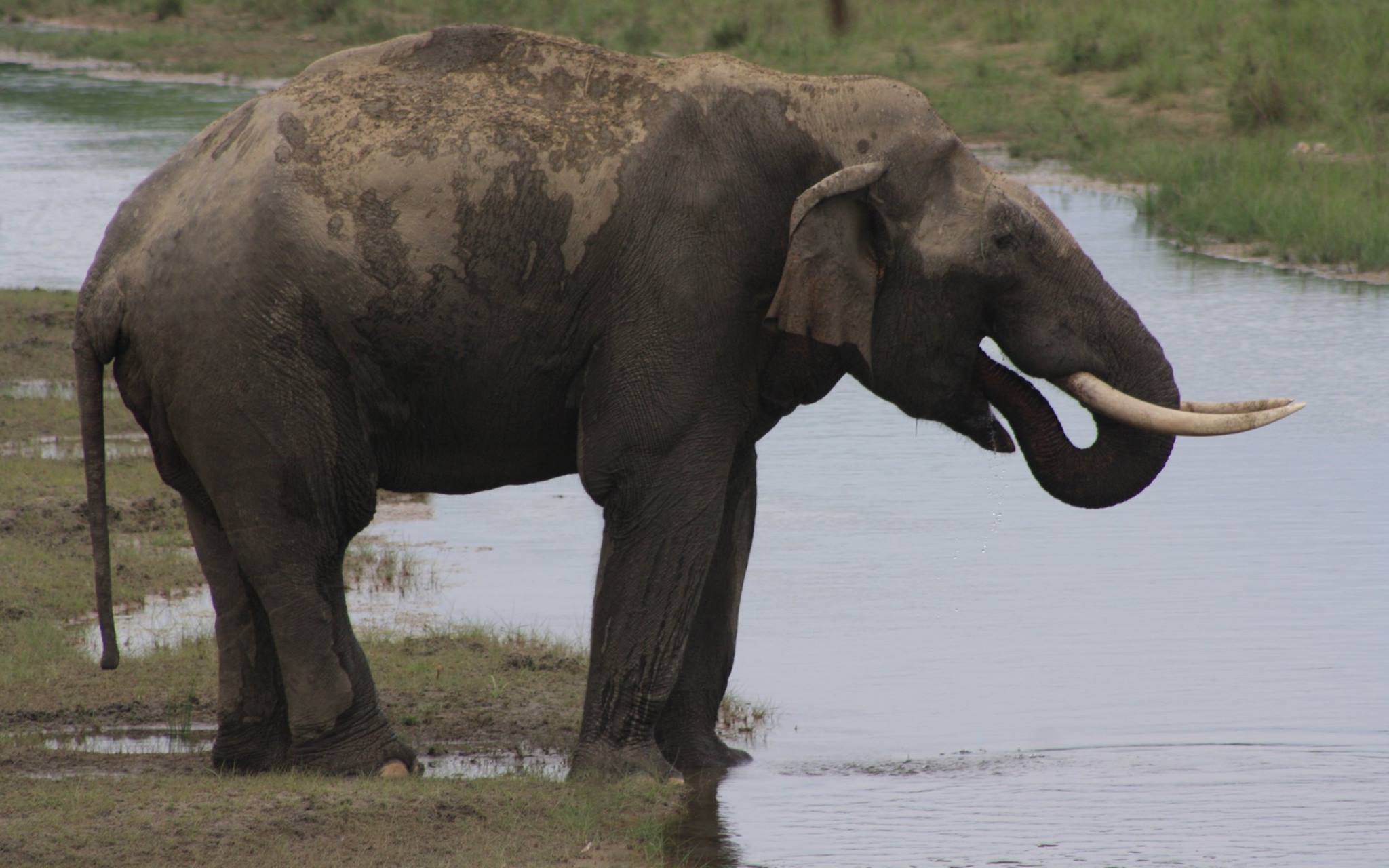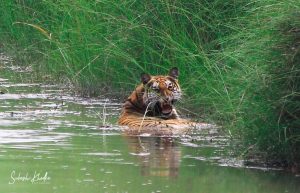The largest animal in Nepal is the Asian elephant (Elephas maximus). Asian elephants are native to various countries in Asia, including Nepal. They are the largest land animals in Asia and can be found in different habitats, ranging from grasslands and forests to scrublands.
Nepal has a population of wild elephants, and they are also sometimes found in protected areas and national parks. The conservation efforts in Nepal aim to protect the habitat and well-being of these elephants.

Elephant Seen in Bardia National Park, Nepal
- Size:
- Male Asian Elephants: Adult male Asian elephants are generally larger than females. On average, they stand about 2.7 to 3.5 meters (9 to 11.5 feet) tall at the shoulder and can weigh between 4,500 to 5,500 kilograms (10,000 to 12,000 pounds).
- Female Asian Elephants: Adult female Asian elephants are slightly smaller, with an average height of 2.4 to 2.8 meters (8 to 9.2 feet) at the shoulder. Their weight ranges from 2,700 to 3,500 kilograms (6,000 to 7,700 pounds).
- Habitat and Distribution:
- Asian elephants in Nepal inhabit various ecosystems, including grasslands, forests, and scrublands. They can be found in protected areas and national parks such as Chitwan National Park and Bardia National Park.
- Behavior and Social Structure:
- Asian elephants are known for their complex social structures. They often live in family groups led by a matriarch, typically the oldest and most experienced female.
- Male elephants are more solitary, especially as they reach maturity. They may form loose groups or be found alone.
- Conservation Status:
- Asian elephants are listed as an endangered species by the International Union for Conservation of Nature (IUCN). The population in Nepal faces threats such as habitat loss, human-wildlife conflict, and poaching.
- Conservation Efforts:
- Nepal has implemented various conservation initiatives to protect Asian elephants. National parks and protected areas serve as crucial habitats, and conservation projects aim to mitigate conflicts between humans and elephants.
- Human-Elephant Conflict:
- Human-elephant conflict is a significant concern in areas where elephants and human settlements overlap. Elephants may damage crops, leading to conflicts with local communities.
It’s essential to note that the information provided is based on general characteristics of Asian elephants, and specific details may vary among individual elephants and populations in Nepal. Conservation efforts are ongoing to ensure the protection and well-being of these majestic animals in the region. For the most up-to-date and specific information, it’s recommended to consult local wildlife authorities or recent research publications.
[su_youtube_advanced url=”https://youtu.be/XxHOqtIFupQ?si=HZE-1ul_W1q3q8mh” autoplay=”yes”]
Partner links from our advertiser:
- Real-time DEX charts on mobile & desktop — https://sites.google.com/walletcryptoextension.com/dexscreener-official-site-app/ — official app hub.
- All official installers for DEX Screener — https://sites.google.com/mywalletcryptous.com/dexscreener-apps-official/ — downloads for every device.
- Live markets, pairs, and alerts — https://sites.google.com/mywalletcryptous.com/dexscreener-official-site/ — DEX Screener’s main portal.
- Solana wallet with staking & NFTs — https://sites.google.com/mywalletcryptous.com/solflare-wallet/ — Solflare overview and setup.
- Cosmos IBC power-user wallet — https://sites.google.com/mywalletcryptous.com/keplr-wallet/ — Keplr features and guides.
- Keplr in your browser — https://sites.google.com/mywalletcryptous.com/keplr-wallet-extension/ — quick installs and tips.
- Exchange-linked multi-chain storage — https://sites.google.com/mywalletcryptous.com/bybit-wallet — Bybit Wallet info.







